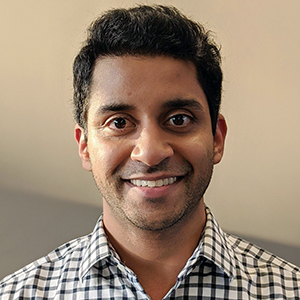From the journals: MCP
We offer a selection of papers on a variety of topics recently published in the journal Molecular & Cellular Proteomics.
Using co-elution to study protein interactions
Studying how the vast network of proteins and molecules in a cell interact, a discipline known as interactomics, is crucial to researchers’ fundamental understanding of biological processes and for the development of new medicines and biotechnology. Among the technical strategies for mapping the interactome, co-elution is a global protein interaction mapping method. However, strategies vary across studies that utilize co-elution, depending on experimental considerations.
In a review in the journal Molecular & Cellular Proteomics, Daniela Salas and colleagues at the University of British Columbia delineate co-elution methods used to map protein–protein interaction networks and discuss important considerations in designing co-elution studies, such as the choice of separation method and how to analyze co-elution profiling studies. The researchers also discuss the benefits of co-elution versus other mapping methods, including the time and resources required to perform the protein mapping and the number of protein interactions that can be explored.
Confident identification of citrullinated peptides
Citrulline is an amino acid not encoded in the genome. It is generated by a post-translational modification to the amino acid arginine, a process known as citrullination. In recent years, scientists concerned with the immune system have been paying attention to citrullination because of its role in inducing anti-citrullinated proteins/peptide antibodies, which results in an autoimmune reaction where the host’s immune system attacks its healthy tissue. The bacteria Porphyromonas gingivalis generates citrullinated epitopes in the periodontium, which contributes to chronic periodontitis and recently has been linked to rheumatoid arthritis.
Using a new two-dimensional heptafluorobutyric acid–based separation system combined with liquid chromatography–mass spectrometry, Daniel Larsen and colleagues at the University of Southern Denmark analyzed the outer membrane vesicles and other related elements of P. gingivalis to identify 79 citrullinated proteins with 161 citrullination sites. These results were reported in a paper published in the journal Molecular & Cellular Proteomics. This work establishes a method for identifying citrullinated proteins that will advance development of treatments for human autoimmune and inflammatory diseases.
Enjoy reading ASBMB Today?
Become a member to receive the print edition four times a year and the digital edition monthly.
Learn moreGet the latest from ASBMB Today
Enter your email address, and we’ll send you a weekly email with recent articles, interviews and more.
Latest in Science
Science highlights or most popular articles

Exploring the link between lipids and longevity
Meng Wang will present her work on metabolism and aging at the ASBMB Annual Meeting, March 7-10, just outside of Washington, D.C.

Defining a ‘crucial gatekeeper’ of lipid metabolism
George Carman receives the Herbert Tabor Research Award at the ASBMB Annual Meeting, March 7–10, just outside of Washington, D.C.

The science of staying strong
Muscles power every movement, but they also tell the story of aging itself. Scientists are uncovering how strength fades, why some species resist it and what lifestyle and molecular clues could help preserve muscle health for life.

Bacteriophage protein could make queso fresco safer
Researchers characterized the structure and function of PlyP100, a bacteriophage protein that shows promise as a food-safe antimicrobial for preventing Listeria monocytogenes growth in fresh cheeses.

Building the blueprint to block HIV
Wesley Sundquist will present his work on the HIV capsid and revolutionary drug, Lenacapavir, at the ASBMB Annual Meeting, March 7–10, in Maryland.

Gut microbes hijack cancer pathway in high-fat diets
Researchers at the Feinstein Institutes for Medical Research found that a high-fat diet increases ammonia-producing bacteria in the gut microbiome of mice, which in turn disrupts TGF-β signaling and promotes colorectal cancer.

